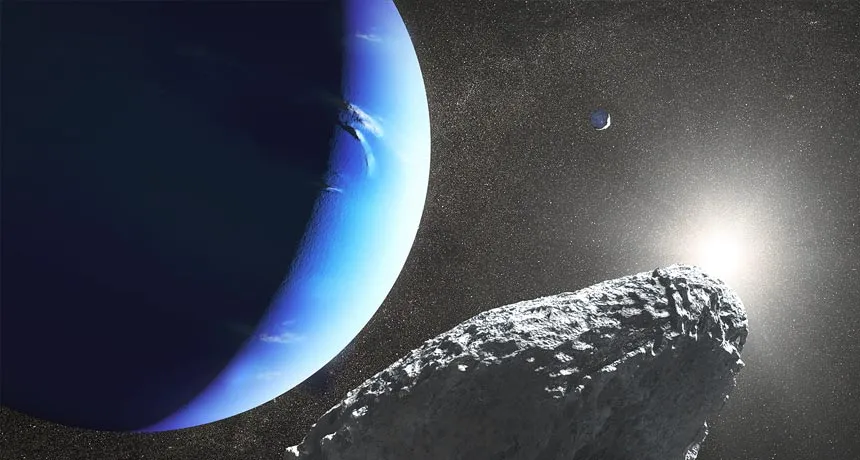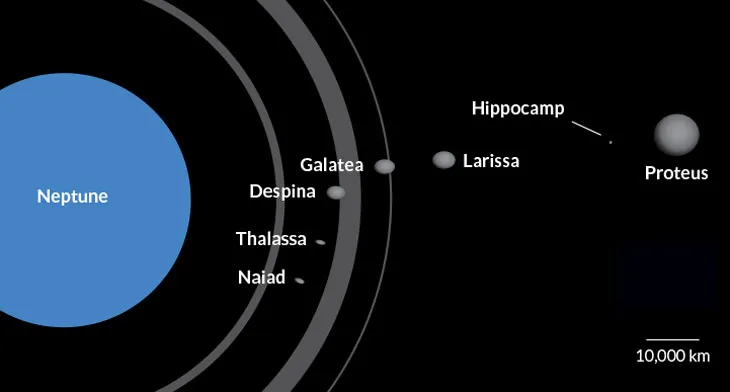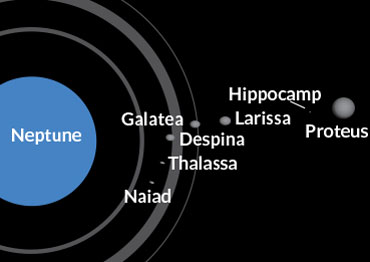Neptune’s smallest moon may be a chip off another moon
The tiny object has been given the official name Hippocamp

CHIP OFF THE OLD BLOCK A massive collision that left Neptune’s second largest moon, Proteus (as seen in the background of this illustration) with a huge crater may have spawned its smallest moon, Hippocamp (foreground).
NASA, ESA, and J. Olmsted/STScI









